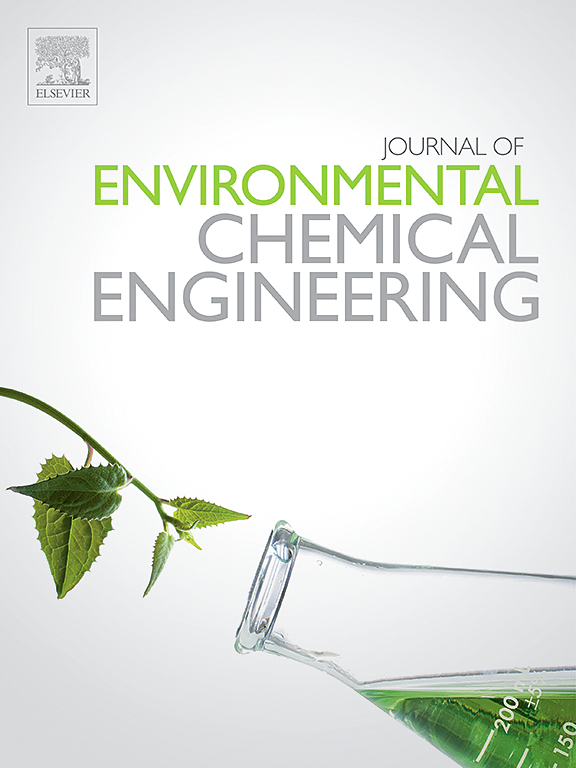水处理用增强耐磨性微孔膜的研究进展
IF 7.4
2区 工程技术
Q1 ENGINEERING, CHEMICAL
引用次数: 0
摘要
在过去的几十年里,超滤膜的研究主要集中在不牺牲溶质吸附性的前提下提高其抗污性和透水性。然而,尽管全球对淡水生产的需求不断增加,膜磨损仍然是一个相对被忽视的问题。这一挑战对于聚合物基膜尤其重要,例如由聚偏氟乙烯、聚氯乙烯和醋酸纤维素制成的膜。自2020年以来,人们对开发耐磨性超滤膜的兴趣日益浓厚。与之前强调抗污性的综述不同,本文关注的是膜磨损这一关键但尚未得到充分探讨的问题,并对最近提高膜耐久性的策略进行了全面比较。研究表明,可以通过聚合物或添加剂混合、表面涂层/接枝、热压(纳米纤维)和三明治结构设计来增强耐磨性,其中许多方法还可以提高水通量,提供协同效益。本文还介绍了用于增强聚合物膜耐磨性的各种制备和改性方法的优点和局限性。然而,尽管实验室规模的结果很有希望,这些耐磨膜在现实条件下的长期性能仍然不确定。虽然一些研究报告在长时间的测试中表现稳定,但他们往往忽视了商业膜有望有效运行数年。如果没有在实际环境中进行长期验证,改进的耐磨性的耐久性仍然值得怀疑。我们希望这篇综述是一个有价值的资源,为研究人员寻求开发耐磨性聚合物膜,能够在处理含有研磨性物质(如颗粒、催化剂、矿物沉淀和微/纳米塑料)的给水时保持性能。本文章由计算机程序翻译,如有差异,请以英文原文为准。
Development of microporous membranes with enhanced abrasion resistance for water treatment: A review
Over the past few decades, research on ultrafiltration membranes has primarily concentrated on enhancing fouling resistance and water permeability without sacrificing solute rejection. However, membrane abrasion has remained a relatively overlooked issue, despite the increasing global demand for freshwater production. This challenge is particularly significant for polymer-based membranes, such as those made from polyvinylidene fluoride, polyvinyl chloride and cellulose acetate. Since 2020, interest in developing abrasion-resistant ultrafiltration membranes has been growing. Unlike earlier reviews that emphasize fouling resistance, this paper focuses on the critical yet underexplored problem of membrane abrasion, providing a comprehensive comparison of recent strategies to improve membrane durability. Studies show that abrasion resistance can be enhanced through polymer or additive blending, surface coating/grafting, hot pressing (on nanofibers) and sandwich-structured designs—many of which also boost water flux, providing synergistic benefits. This review also examines the advantages and limitations of various fabrication and modification methods designed to enhance the abrasion resistance of polymeric membranes. However, despite promising lab-scale results, the long-term performance of these abrasion-resistant membranes under real-world conditions remains uncertain. While some studies report stable performance over extended testing periods, they often overlook that commercial membranes are expected to operate effectively for several years. Without long-term validation in practical settings, the durability of improved abrasion resistance remains questionable. We hope this review is a valuable resource for researchers seeking to develop abrasion-resistant polymeric membranes capable of maintaining performance when treating feed water containing abrasive substances such as particulates, catalysts, mineral precipitates and micro-/nanoplastics.
求助全文
通过发布文献求助,成功后即可免费获取论文全文。
去求助
来源期刊

Journal of Environmental Chemical Engineering
Environmental Science-Pollution
CiteScore
11.40
自引率
6.50%
发文量
2017
审稿时长
27 days
期刊介绍:
The Journal of Environmental Chemical Engineering (JECE) serves as a platform for the dissemination of original and innovative research focusing on the advancement of environmentally-friendly, sustainable technologies. JECE emphasizes the transition towards a carbon-neutral circular economy and a self-sufficient bio-based economy. Topics covered include soil, water, wastewater, and air decontamination; pollution monitoring, prevention, and control; advanced analytics, sensors, impact and risk assessment methodologies in environmental chemical engineering; resource recovery (water, nutrients, materials, energy); industrial ecology; valorization of waste streams; waste management (including e-waste); climate-water-energy-food nexus; novel materials for environmental, chemical, and energy applications; sustainability and environmental safety; water digitalization, water data science, and machine learning; process integration and intensification; recent developments in green chemistry for synthesis, catalysis, and energy; and original research on contaminants of emerging concern, persistent chemicals, and priority substances, including microplastics, nanoplastics, nanomaterials, micropollutants, antimicrobial resistance genes, and emerging pathogens (viruses, bacteria, parasites) of environmental significance.
 求助内容:
求助内容: 应助结果提醒方式:
应助结果提醒方式:


